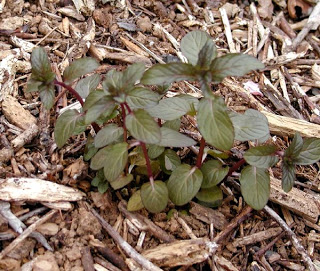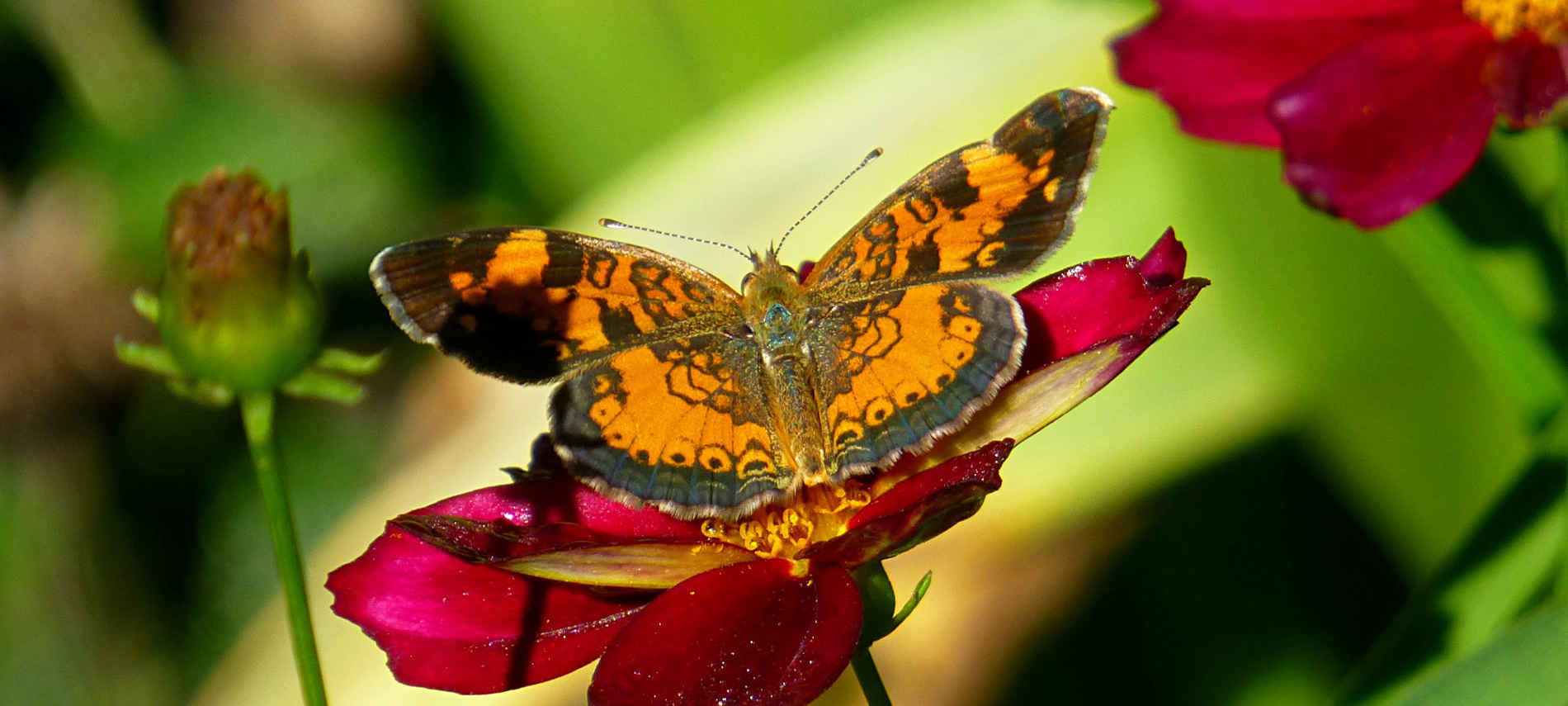One of our initiatives in 2009 involves “greening up the Inn” where we look for ways to reduce waste, improve energy efficiency and become better stewards of the beautiful environment that surrounds us here inside Pisgah National Forest.
In this month’s installment of Greening Up the Inn, we will discuss two of our favorite things — gardening and eating — combined into one yummy subject: edible gardens.
At the Inn on Mill Creek, not only do we have blueberry, raspberry and blackberry bushes, and apple and peach trees, but we also have a nice little herb garden containing delicious herbs, including chives, sage, lavender, rosemary, a few different types of thyme, yarrow, coriander (cilantro), spearmint, apple mint and Brigette’s favorite — chocolate mint (pictured below):

One of our chocolate mint plants, planted in 2008
In the past, we’ve planted some additions to the herb garden, such as large leaf basil, red leaf basil and dill. This year, we’ll be planting more basil as well as lovage, chamomile, and Dave’s favorite — fennell, all for use at the Inn.
In 2009, we also hope to add lingonberry bushes near our blueberry bushes. Lingonberries grow on small evergreen shrubs; the fruit is similar to a cranberry. They’re popular in Scandanavian countries, like Sweden where Brigette’s grandparents trace their lineage. [Maybe we’ll have lingonberry bushes at the start of our labyrinth…]
Finally, within the next few years, we have plans for a raised vegetable garden on one of the large lawns on the north end of the property. Looking at garden plans, we’ve come across two that we really like. One is in the shape of a circle, with six grass path divisions radiating out from the center, similar to an asterisk with a circle border, where the vegetable plots are triangular. The other is a traditional vegetable garden grid pattern, with stones dividing the different grids. We have lots of ideas on what to put in the vegetable garden. If you have any ideas, please share them with us by e-mail!


